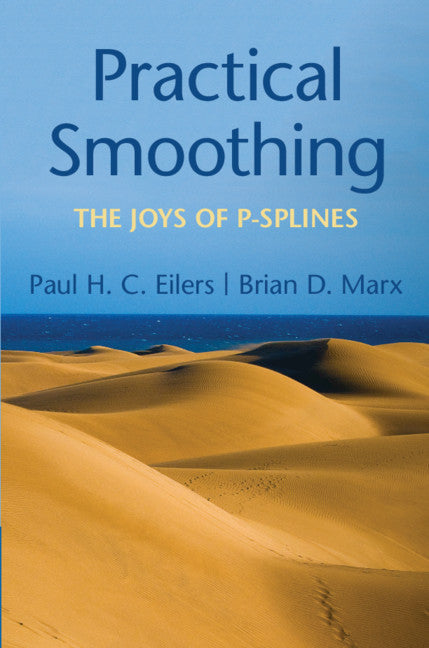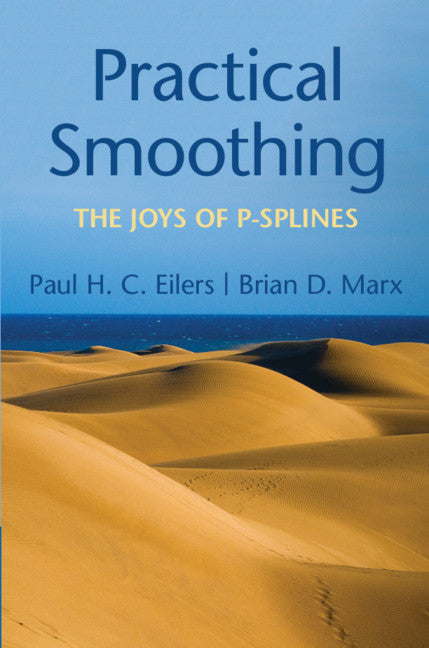Freshly Printed - allow 4 days lead
Couldn't load pickup availability
Practical Smoothing
The Joys of P-splines
This user guide presents a popular smoothing tool with practical applications in machine learning, engineering, and statistics.
Paul H.C. Eilers (Author), Brian D. Marx (Author)
9781108482950, Cambridge University Press
Hardback, published 18 March 2021
208 pages
23.3 x 15.6 x 1.5 cm, 0.45 kg
'This is the book that everyone working on smoothing models should keep handy. At last we have a manuscript that shows the real power of P-splines, their versatility, and the different perspectives you can take to use them. Chapters 1 to 3 will certainly appeal to those who want to start working in this field, and to researchers that need to deepen their knowledge of this technique. Scientists and practitioners from other areas will find chapters 4 to 8 very useful for the wide range of examples and applications. The companion package and the fact that all results (even figures) are reproducible is a real bonus. Thank you Paul and Brian for being truthful to your motto: 'show, don't tell'.' Maria Durbán, University Carlos III de Madrid
This is a practical guide to P-splines, a simple, flexible and powerful tool for smoothing. P-splines combine regression on B-splines with simple, discrete, roughness penalties. They were introduced by the authors in 1996 and have been used in many diverse applications. The regression basis makes it straightforward to handle non-normal data, like in generalized linear models. The authors demonstrate optimal smoothing, using mixed model technology and Bayesian estimation, in addition to classical tools like cross-validation and AIC, covering theory and applications with code in R. Going far beyond simple smoothing, they also show how to use P-splines for regression on signals, varying-coefficient models, quantile and expectile smoothing, and composite links for grouped data. Penalties are the crucial elements of P-splines; with proper modifications they can handle periodic and circular data as well as shape constraints. Combining penalties with tensor products of B-splines extends these attractive properties to multiple dimensions. An appendix offers a systematic comparison to other smoothers.
1. Introduction
2. Bases, penalties, and likelihoods
3. Optimal smoothing in action
4. Multidimensional smoothing
5. Smoothing of scale and shape
6. Complex counts and composite links
7. Signal regression
8. Special subjects
A. P-splines for the impatient
B. P-splines and competitors
C. Computational details
D. Array algorithms
E. Mixed model equations
F. Standard errors in detail
G. The website.
Subject Areas: Signal processing [UYS], Machine learning [UYQM], Mathematical theory of computation [UYA], Information technology: general issues [UB], Probability & statistics [PBT], Numerical analysis [PBKS]


